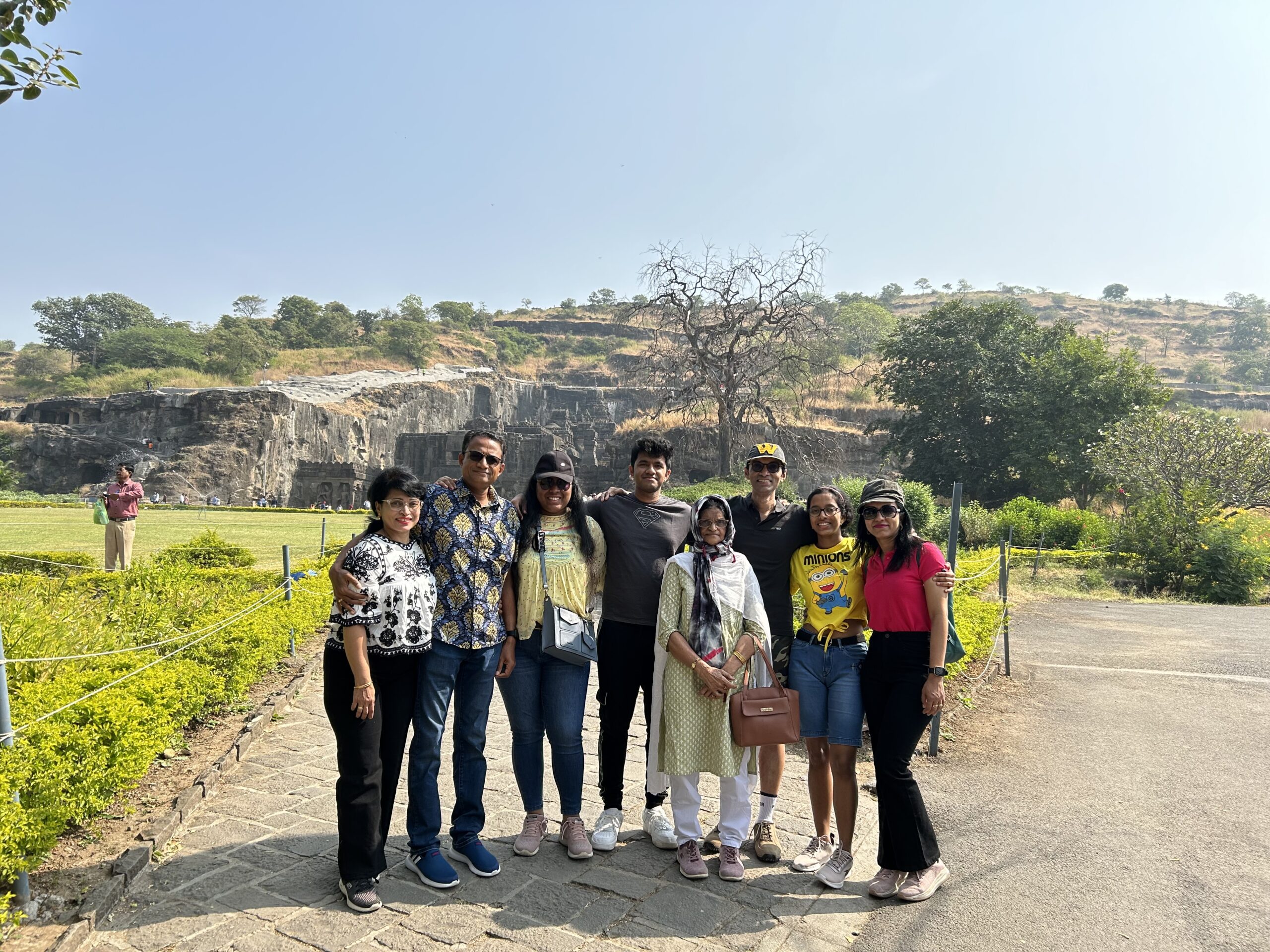Hi readers, so every Diwali (Indian festival of lights) which comes in the month of October/November every year I take a vacation with my family. This Diwali we went to the ‘City of Gates’, Aurangabad, officially known as Chhatrapati Sambhaji Nagar and I thought of sharing my travel experience with you. We made it a road trip and travelled on the newly constructed Samruddhi Mahamarg highway which connects Nagpur and Mumbai. It was a five-day trip, and we covered all the major tourist destinations during this time.
The first day and last day of the trip was spent in travelling since it takes an average of seven hours from Mumbai to Aurangabad whether you plan to travel by road or rail. We started our journey around 0800 hrs on the 12th of November and reached our hotel by 4:30 pm. If you are going to be travelling in the next 3-4 months, a small tip would be to have an early lunch before you enter that Samruddhi expressway because, since this road has been recently built, there are no food malls along the highway. We could eat lunch only around 3 pm once we had entered Aurangabad city.
We decided to stay at Hotel Atithi which is in the heart of the city and only a few kilometres away from the main market. After reaching the hotel we freshened up and went outside for a walk to explore the place. We stopped at a café called Indiana which has amazing milkshakes and french fries. If you ever happen to visit this place don’t forget to try their mouth-watering french fries.
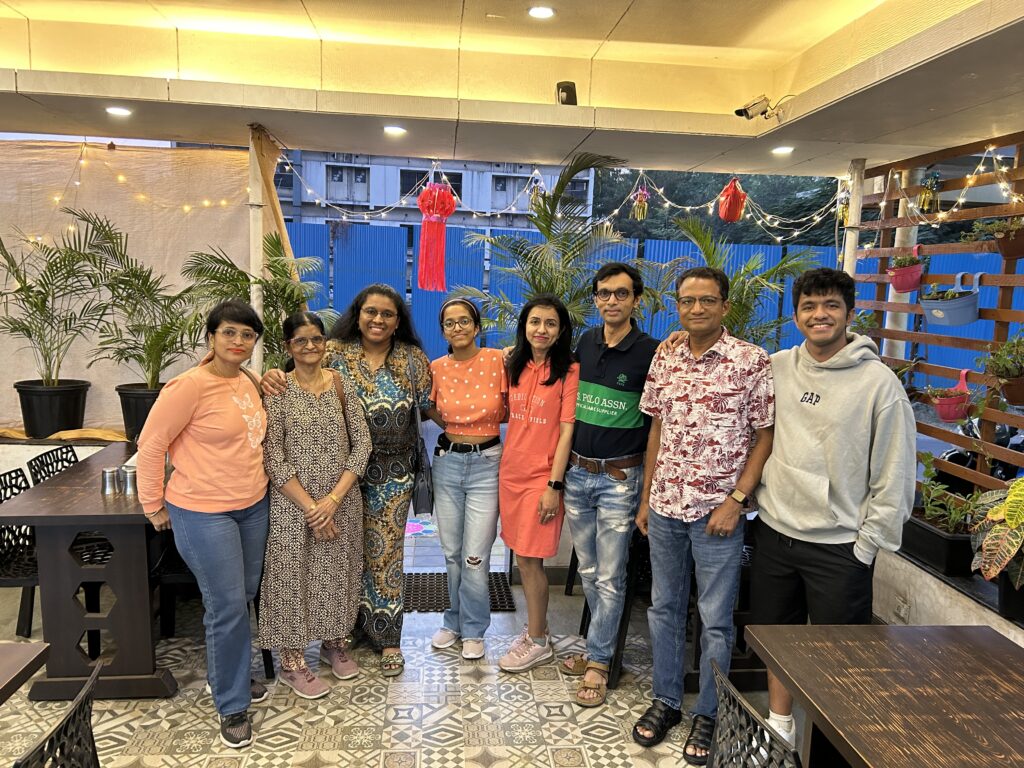
We got back to the hotel around 7pm and after having a good night’s sleep we were ready to get sight-seeing.
Day 1 : Ellora and Daulatabad Fort
We started the day with the complementary breakfast and then left for Ellora at around 0930 hrs. Ellora is 30 km from Aurangabad, and it took us about an hour from our hotel. The Ellora caves are open from 8 am till 5:30 in the evening. It is closed on Tuesdays. The entry fee is Rs. 40 and it is free for children up to 15 years. You can also book your tickets online but that is not necessary. We also hired a guide to explain the history of the caves, however his charge was a bit too high (a thousand rupees) compared to the time he spent with us. Besides, I have had much better experiences with tour guides who were more entertaining. So, I would not recommend taking a guide for this place.
Another tip would be to not carry any food items while entering the caves since there are a lot of monkeys and they will snatch the food from you while you are walking. Mineral water is available inside so there is also no need to carry water. It is very sunny and there is a lot to walk so please wear shoes, sunglasses and a cap. However, if you do forget to bring these, there are a few shops before you enter that sell them at affordable prices. In fact, I did forget to bring my cap and bought one here.
The Ellora caves are divided into three parts – Hinduism, Buddhism and Jainism. There are 17 Hindu caves, 12 Buddhist and 5 Jain caves with idols and carvings depicting the mythology of every religion. Though some carvings are damaged, the detailing done so many years ago is marvellous and commendable. Personally, I don’t enjoy visiting caves as much as I enjoy palaces and museums but Ellora being a UNESCO world heritage site cannot be missed. There is a particular Buddhist temple built with the statue of Buddha and a small window has been carved at the top from which the sun rays enter. The guide told us that once or twice in year when the sun rises, its rays enter the cave temple through the small window in such a way that it starts at Buddha’s feet and ends at his forehead depicting the attainment of inner peace and enlightenment.
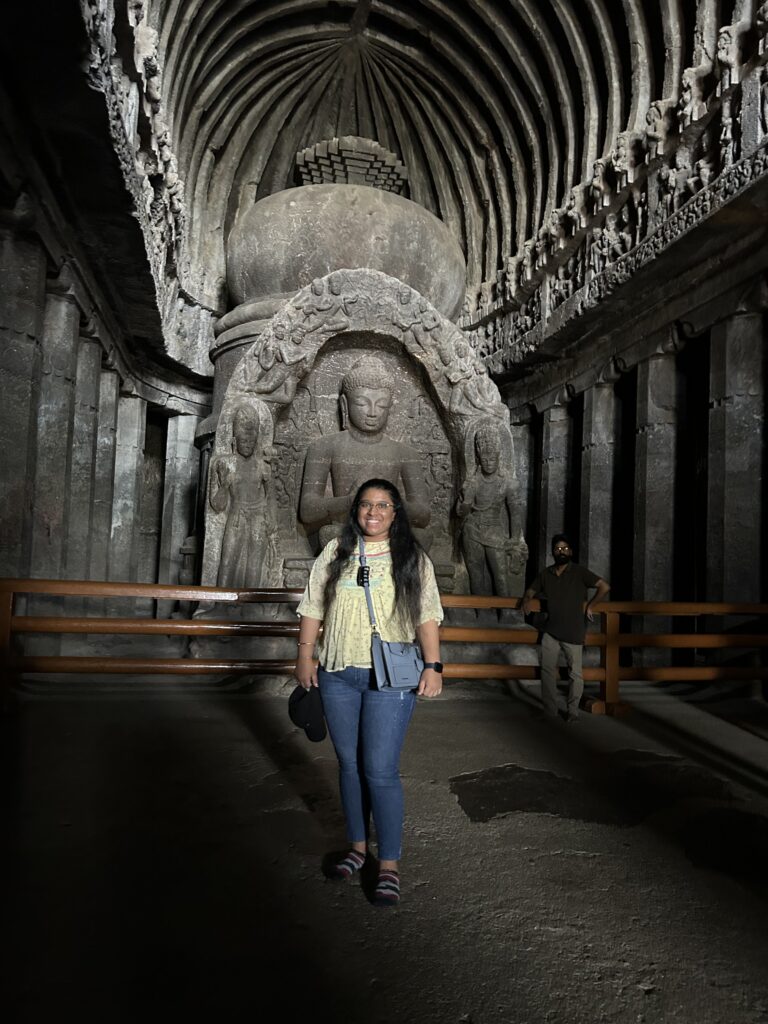
Among the Hindu temples, there is Kailasha temple (Cave 16) which has been carved out of a single rock and it’s one of a kind in the world. This temple is dedicated to Lord Shiva and is based on his abode Mount Kailasha. Many European researchers believe that this temple was built by aliens since it is the only temple visible from space. There is also a theory that the passages which are not accessible to the public lead to an alien abode and there is a whole civilisation living under this temple. But alien or not, the carving in this temple is beautiful. The archaeologists had to move around three million cubic feet of stone to excavate the temple.
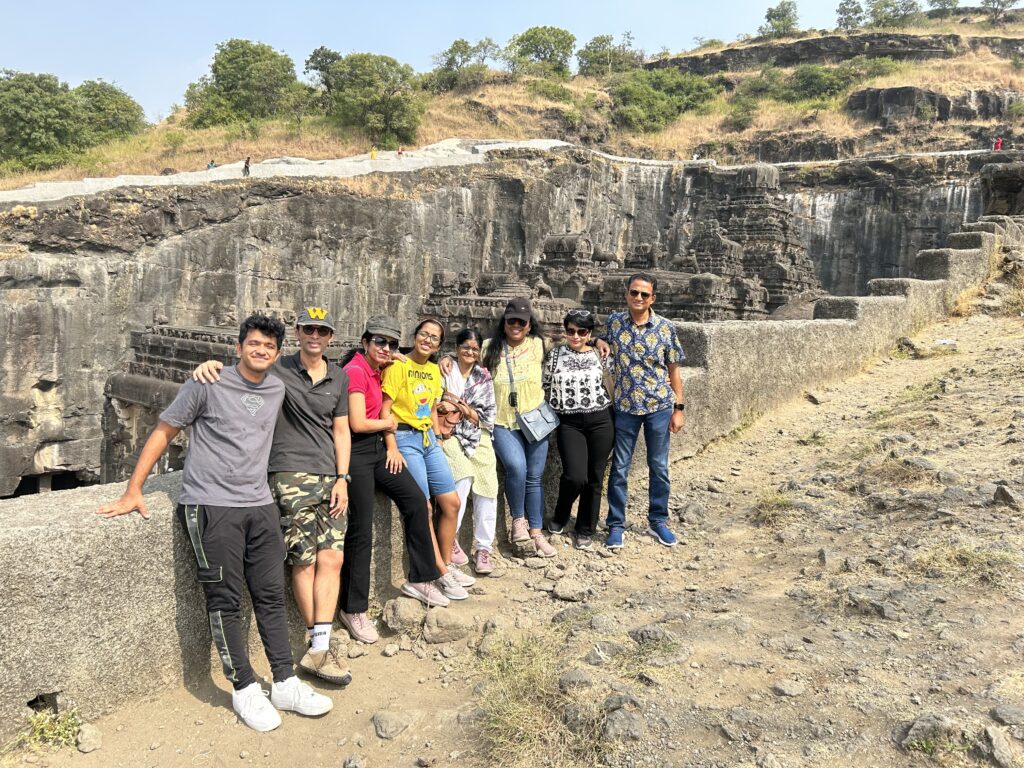
After we saw the caves, we stopped to drink lemon soda at one of the stalls outside. We were famished walking in the hot sun and this drink was very refreshing. We then proceeded for lunch and made our way to the Daulatabad fort.
This fort is open from 9 am to 6 pm and it takes around 2-3 hours to see the whole place. The entry fee is Rs. 10 and it is around 13 km from Ellora. Again, there is a lot of walking involved here and we get to see the typical features of a fort such as a moat, a huge iron door with spikes to stop elephants from entering, a long staircase leading to the top, etc. There was one thing special to this fort called ‘Bhool Bhulaiyaa’ which is a passageway right before the main castle that would confuse the attacking soldiers and would lead them to eventually fall inside the moat.
The fort also has a pretty structure called ‘Chand Minar’ which was constructed by Sultan Al-ud-din in memory of his victory over Gujarat in 1445 CE. This Minar has a height of 70.9 metres from the ground. It is constructed in stone and decorated with coloured tiles which are still found on the wall.
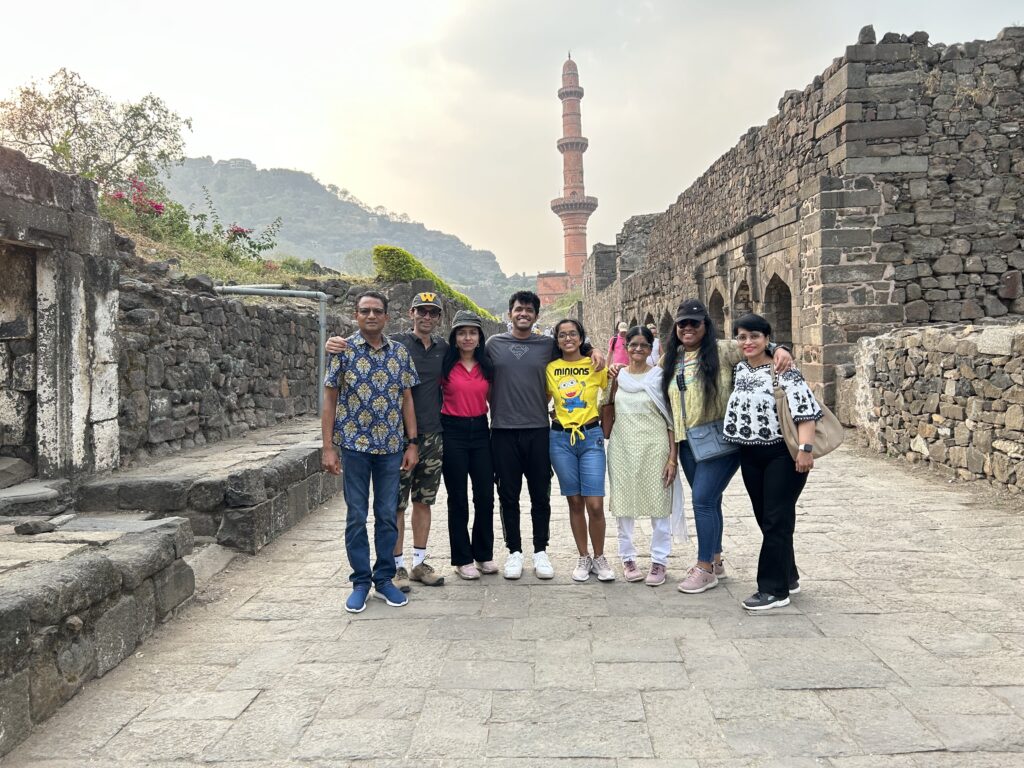
After visiting the fort, we returned to our hotel, had dinner, and saw the display of crackers being lit on the occasion of Diwali.
Day 2 : Ajanta Caves
The next day, after a fulfilling breakfast we went to a church in the city -. St. Thomas Church to pray for my grandmother who was celebrating her 74th birthday that day.
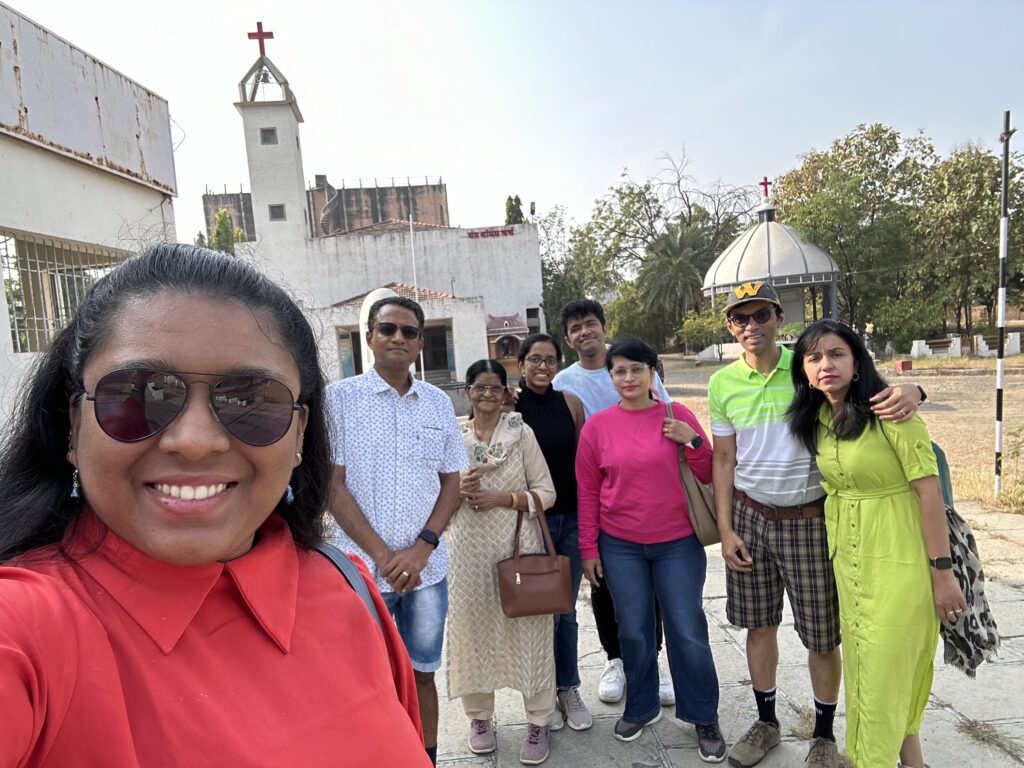
We then hit the road for Ajanta caves. It is 100 kilometres from Aurangabad and takes about two and a half hours to reach. These caves are much older than Ellora and are mostly Buddhist caves with various resting positions of Buddha. They also have colour paintings on its walls which are very attractive. The Ajanta caves are also a UNESCO World Heritage site today and were built thousands of years ago. However, due to lack of inhabitation and the growing of the Deccan Forest these caves remained hidden for a long time. It wasn’t until a British officer stumbled upon it by accident during one of his hunting expeditions that it was discovered.
To reach the caves we need to take an ST bus which leaves us at the entrance of the caves. There are around 30 caves carved into a 250-foot rock face. Caves 2, 10 and 16 are the main caves in my opinion. The visiting hours of the caves are from 9 am to 5 pm and it is closed on Mondays. The entry fee is the same for Ajanta as it was for Ellora.
An important note is that my family and I had gone here on the 14th of November which was Govardhan Puja for all Hindus. Despite this, there was a lot of rush during that day. We spent two hours waiting in line for the bus both while going and coming. On inquiry, we did find that this kind of crowd at Ajanta is unusual and happens very rarely, but I would advise to choose a day which is not a public holiday to avoid the rush.
Since we took two hours to reach Ajanta and another two hours for the bus, it was almost lunch time when we reached the entrance of the cave. Thankfully, there is a government-run restaurant where you can have lunch, but this closes by 5:30pm and we could not have anything to eat here while we were waiting for the bus to take us back home.
Overall, the visit to Ajanta caves was good.
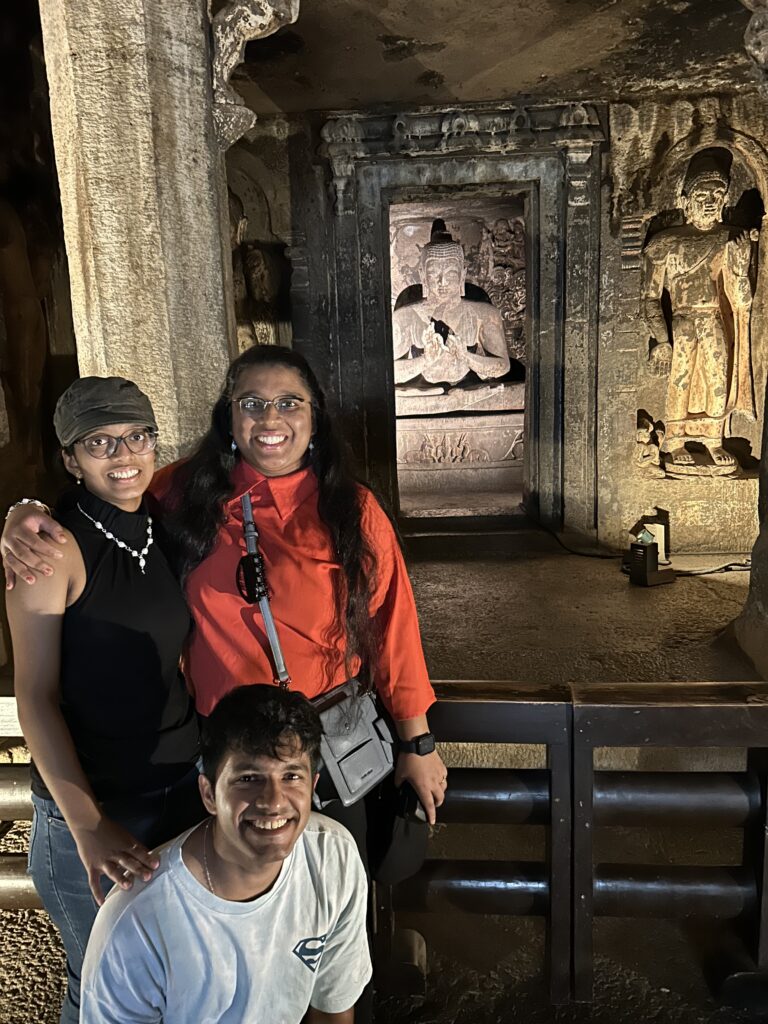
We came back to the hotel and had a nice and relaxing dinner. My grandmother cut her birthday cake and we had a lot of fun wishing and singing for her. There are a lot of Pan centres which can be explored for those who like ‘meetha pan’. I am not a big fan, but my family enjoyed the pan we had here after our dinner. A little side note, most of the shops close by 10:30 pm, so be sure to go before that.
Day 3 : Bibi ka Maqbara, Panchakki and Gul Mandi
After breakfast, we first went to pray at St. John the Evangelist church which is also in the city. Then we headed for Bibi ka Maqbara. Taj Mahal is undoubtedly the inspiration behind this monument and was designed by Atalullah, who was the son of the architect of Taj Mahal.
Bibi ka Maqbara was built in 1668 in memory of Rabia Durani who was Aurangzeb’s wife. It was erected by Azam Shah, Rabia Durani’s son. Being a splitting image of the Taj Mahal, it is often referred to as the ‘Taj of the Deccan’. The white dome of the Maqbara has panels adorned with intricate designs of flowers. It is open from 8am to 8pm on all the days of the week. The entry fee is Rs. 25 and the ticket can also be purchased online.
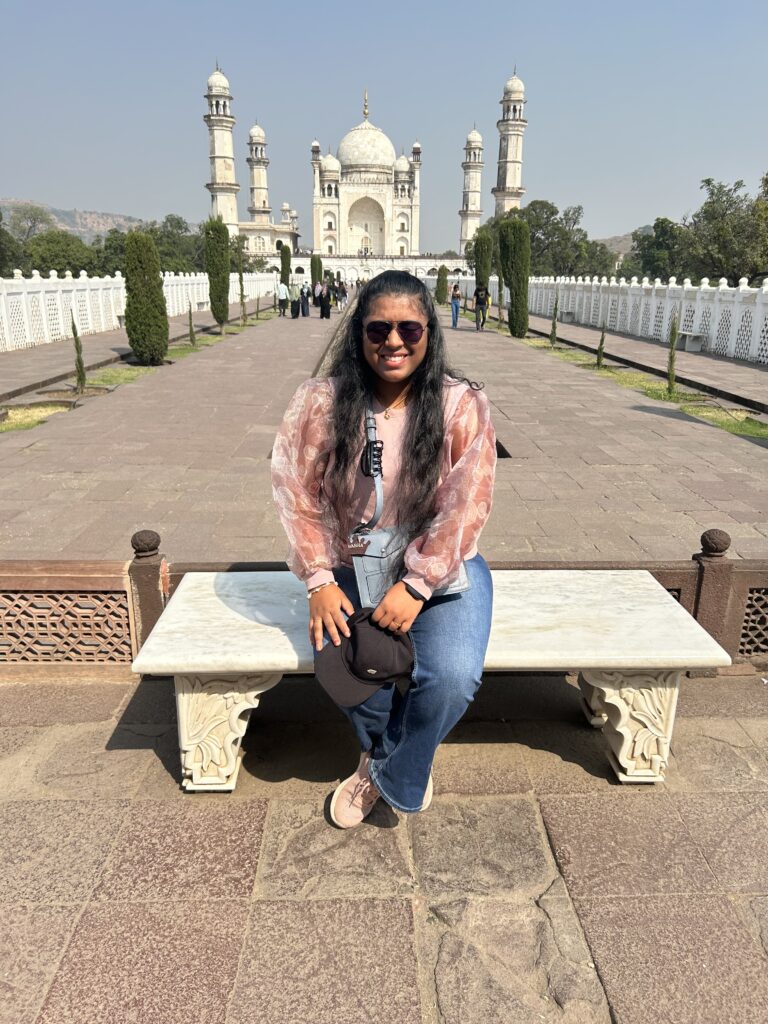
We then proceeded for lunch at an amazing restaurant – ‘The Great Sagar’ restaurant. We had Chicken Biryani, Dal, Roti and Chicken noodles. But the most delicious dish was the dessert – Qubani with vanilla ice cream. This dish is made of apricot and served with vanilla ice cream. I have never eaten this before and it was mouth-watering. This restaurant is also quite affordable. I would say this is a must visit after Bibi ka Maqbara.
After a fulfilling lunch, we decided to go to Panchakki. Panchakki is a water mill located in the complex of Baba Shah Musafir (a Sufi saint) Dargah. It was built by Baba Shah Musafir himself in the 17th century. It was set-up with an aim to grind grains on the chakki which moves with the force of the water falling on it. These grains were for the pilgrims who visited the Dargah. The source of continuous water supply is an underground stream which begins from a well above the Harsul river.
Inside the complex there is also a huge banyan tree which is 600 years old. One thing to remember is, that women are not allowed inside the Dargah because Baba Shah was unmarried.
There are many gift shops and novelty items outside Panchakki. There is also an outlet store for Paithani sarees, dress materials and Himroo shawls which is the speciality of Aurangabad. Paithani is the embroidery pattern which is famous in Maharashtra.
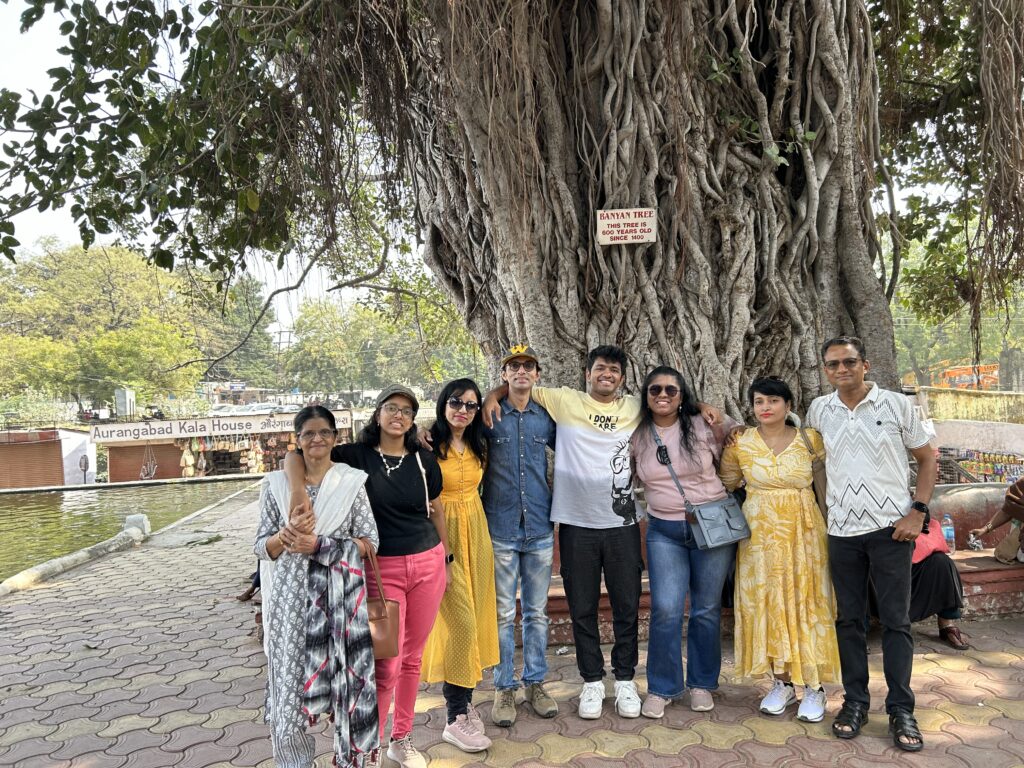
Around 3pm we decided to go back to the hotel and rest. Our plan was to have tea and leave for Gul Mandi – the most famous market of Aurangabad. All the places we visited on Day 3 – the church, Bibi ka Maqbara, Panchakki and Gul Mandi are in the main city within a five-kilometre radius.
Another note for all those travelling by car, all the above places discussed above have designated parking spaces, except the restaurants and Gul Mandi. However, the parking rules are not very strict, and you can park your cars by the side of the road.
If you are from Mumbai, then there is nothing in Gul Mandi you haven’t seen before. To be honest, if you are short on time, you can skip this market because there is nothing special about it. It is like any other market in Bombay. There is one shop which is good – Ajanta Silk Emporium. They have silk bed covers, sarees, comforters, dress materials, etc. I brought one bedsheet for me which has embroidery in silk. The bedsheets are anywhere between INR 550 to INR 900.
We returned to our hotel by 8pm and had dinner.
The next morning, after breakfast, we checked out and started our way back to Mumbai.
To put it in a few words, Aurangabad is an amazing city, and it is a very good place to getaway for a few days and enjoy the history that has been etched by various kings and saints.
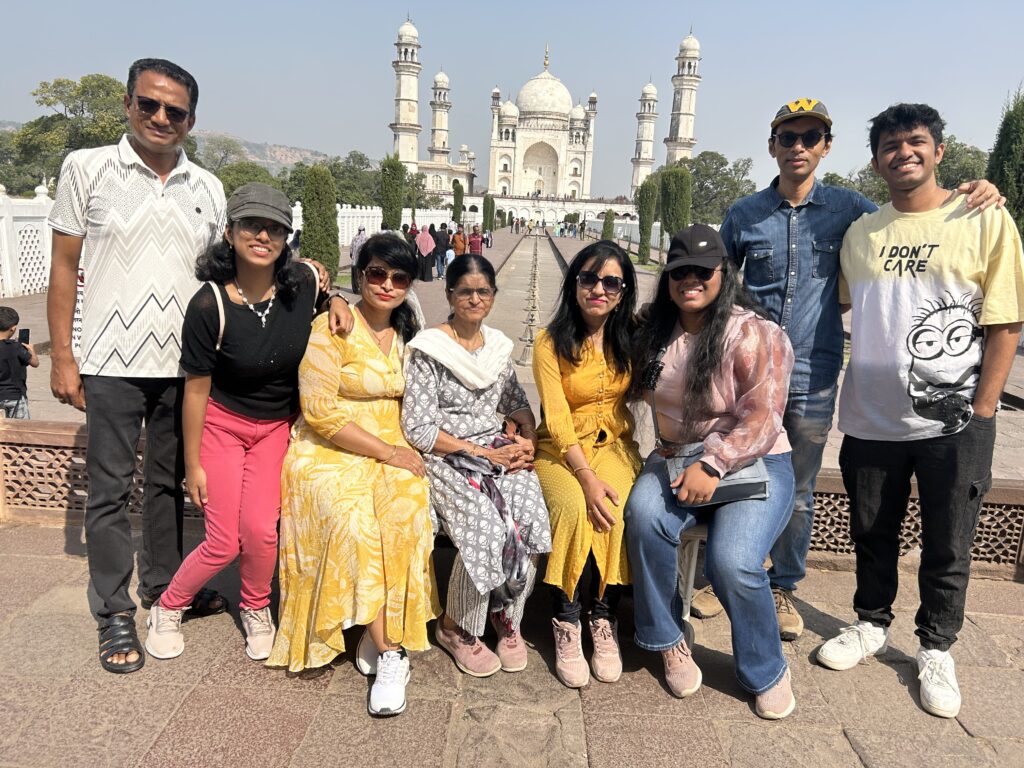
If we had a few more days, we would have probably also visited Jyotirlinga temple and Siddharth Garden. Maybe, next time I visit this city I will cover everything I missed out on. I have made a few pointers below which may help you in case you plan to travel to Aurangabad.
Hotels & Restaurants
As mentioned earlier, I stayed at Hotel Atithi which is a 3-star hotel. The room rent is approximately INR 3,500 per night. The rooms and housekeeping are excellent. However, I was expecting a little more from the complementary buffet. There were very limited options and the supposedly authentic Maharashtrian dishes were not that tasty. But the rooms, did make up for it. You can visit the below link to learn more about Hotel Atithi.
The restaurant at this hotel has very good food, but what they have in food they lack in service. I’m not sure whether this is always the case or because it was Diwali, but the restaurant was highly under-staffed, and we almost never got a table on time in the 4 days we stayed there. But there is a roof-top area in the restaurant which has a wonderful ambience in the evening.
The day before leaving we went to a restaurant called Baraka which served Turkish, Arabic and Mughlai cuisine. We ordered three sizzlers expecting it to have french fries, veggies, rice, chicken gravy and sauce, but it had only two types of rice with two types of curry which was way too much for six people. We had kunafa for dessert which was mediocre at best. I would recommend to stick to Indian cuisines while at Aurangabad and give Baraka a miss.
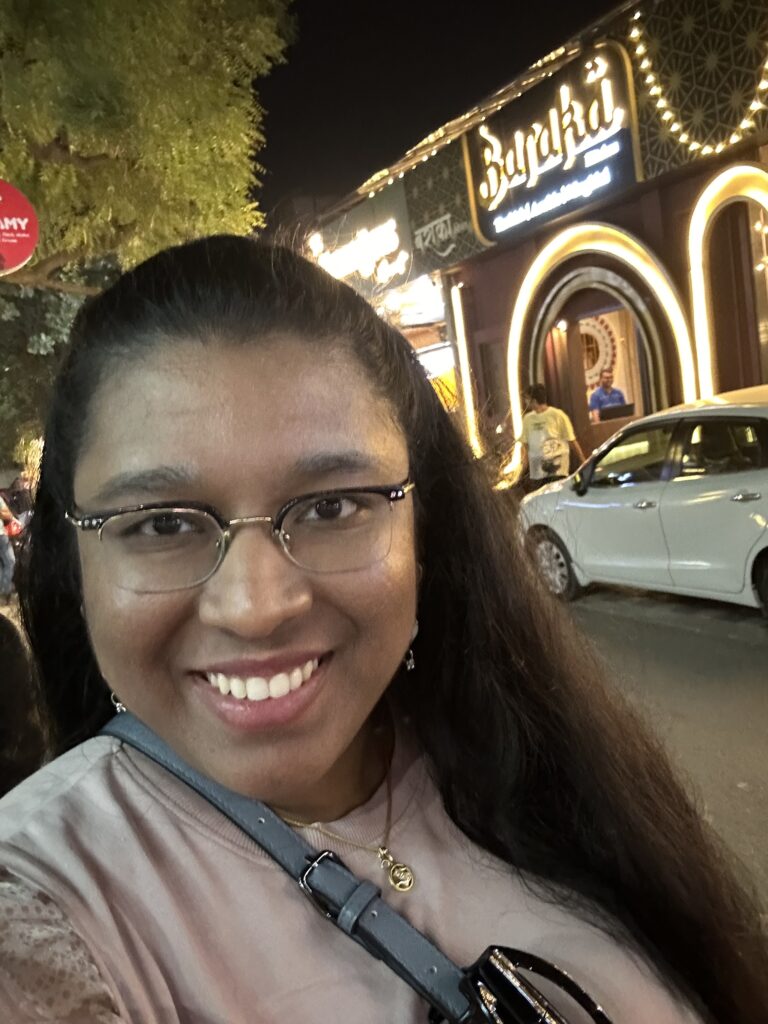
Souvenirs
I collect a lot of souvenirs when I travel, I also love, love, love shopping. It is my favourite pastime and I make sure I visit the famous markets of all the places I travel. Even in Aurangabad, I shopped a lot and came back with amazing stuff along with some amazing memories.
I brought two things which are special to Aurangabad. One is a statue of Buddha’s head made of basalt, the same rock carved in the Ajanta and Ellora caves. The other is a Himroo shawl, which has embroidery that is inspired from the carvings and painting of the caves. I know some people think that buying souvenirs is a waste of money and space, but for me a souvenir is how the place I once visited is still alive in me. I bought the statue of Buddha at Ajanta caves for INR 250 and the Himroo shawl at Panchakki for INR 750.
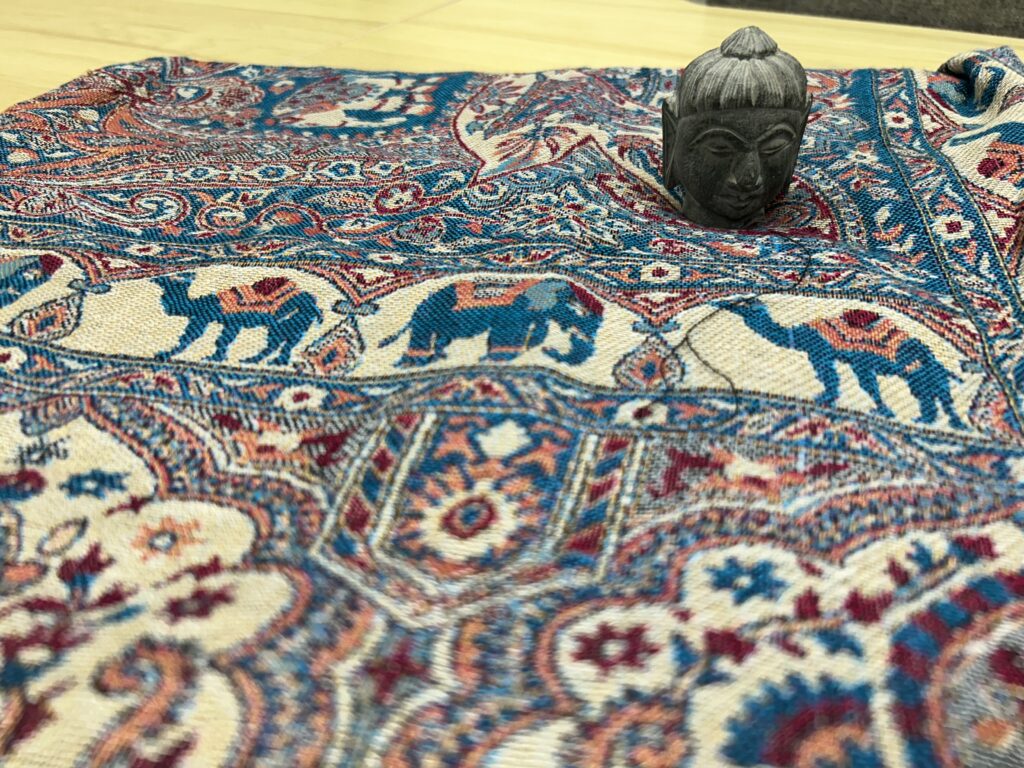
That’s it from me. I hope this article has given you some valuable insights about Aurangabad and has also inspired you to travel there. If you have reached here, then I would want to thank you for reading till the end. Until next time. Lots of love and kisses. Take care 😊

